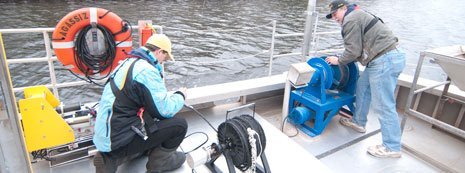A combined chemical and phytoremediation method for reclamation of acid mine drainage–impacted soils
Document Type
Article
Publication Date
3-13-2019
Abstract
Production of acid mine drainage (AMD) and acid sulfate soils is one of the most concerning environmental consequences associated with mining activities. Implementation of appropriate post-mining AMD management practices is very important to minimize environmental impacts such as high soil acidity, soil erosion, and metal leachability. The objective of this study was to develop a cost-effective and environment-friendly “green” technology for the treatment of AMD-impacted soils. This study utilized the metal-binding and acid-neutralizing capacity of an industrial by-product, namely drinking water treatment residuals (WTRs), and the extensive root system of a metal hyper-accumulating, fast-growing, non-invasive, high-biomass perennial grass, vetiver (Chrysopogon zizanioides L.) to prevent soil erosion. Aluminum (Al)-based and calcium (Ca)-based WTRs were used to treat AMD-impacted soil collected from the Tab-Simco coal mine in Carbondale, IL. Tab-Simco is an abandoned coal mine, with very acidic soil containing a number of metals and metalloids such as Fe, Ni, Zn, Pb, and As at high concentrations. A 4-month-long greenhouse column study was performed using 5% and 10% w/w WTR application rates. Vetiver grass was grown on the soil-WTR mixed media. Turbidity and total suspended solid (TSS) analysis of leachates showed that soil erosion decreased in the soil-WTR-vetiver treatments. Difference in pH of leachate samples collected from control (3.06) and treatment (6.71) columns at day 120 indicated acidity removal potential of this technology. A scaled-up simulated field study was performed using 5% WTR application rate and vetiver. Soil pH increased from 2.69 to 7.2, and soil erosion indicators such as turbidity (99%) and TSS (95%) in leachates were significantly reduced. Results from the study showed that this “green” reclamation technique has the potential to effectively treat AMD-impacted soils.
Recommended Citation
Roychowdhury, A.,
Sarkar, D.,
&
Datta, R.
(2019).
A combined chemical and phytoremediation method for reclamation of acid mine drainage–impacted soils.
,
Environmental Science and Pollution Research
http://doi.org/10.1007/s11356-019-04785-z
Retrieved from: https://digitalcommons.mtu.edu/cee-fp/83


Publisher's Statement
© Springer-Verlag GmbH Germany, part of Springer Nature 2019. Publisher's version of record: https://doi.org/10.1007/s11356-019-04785-z